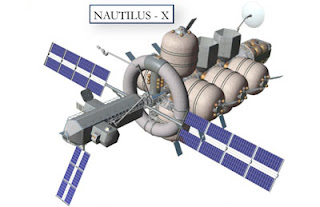Who Would Have Guessed?
It was Stiennon and Hoerr's space-nerd spectacular "The Rocket Company" (now available on Kindle!) that introduced me to Kroemer's lemma:
The last 40 years has seen a lot of futile effort by space enthusiasts to find the one magic product or market that will justify building a truly commercial space industry. Well, it hasn't been found, and we're tired of waiting for it. And if you accept Kroemer's lemma, it can't be done that way anyhow. Even if you guess correctly what it is that won't create a huge growth in demand for launch services so that costs come down, that demand won't -- and can't -- come into being until the cost does come down.
So who is Kroemer and what is his lemma?
Herbert Kroemer is a Nobel Laureate in physics who wrote, in 1995, the Lemma of New Technology:
The principle applications of any sufficiently new and innovative technology always have been -- and will continue to be -- applications created by that technology. Ultimately, progress in applications is not deterministic, but opportunistic, exploiting for new applications whatever new science and technology happen to be coming along.
Around 1999, the Jordi Puig-Suari of California Polytechnic State University and Bob Twiggs of Stanford University decided to work together on a standard that would enable graduate students to design, build, test and operate in space their own spacecraft, with capabilities not much more advanced than the world's first spacecraft, Sputnik. It was called CubeSat. At the time, no-one imagined that commercial aerospace companies would ever be interested in flying such small, limited, even primitive spacecraft. A lot has changed since then, including CubeSats, which have gotten bigger, better communications, propulsion and may even be landing on the Moon soon.
Ten years later, Chen, Strickler and Adler launched Kickstarter. In a perfect example of Kroemer's lemma, The New York Times called it "the people's NEA", comparing Kickstarter to The National Endowment for the Arts, an agency of the United States federal government that offers support and funding for projects exhibiting "artistic excellence". Who would have thought that the most successful project, just two years later, would be "Pebble", an e-paper watch for iPhone and Android devices. Or that Tim DeBenedictis would raise $117,000 for SkyCube, just one of the more famous CubeSats projects that have been funded through the platform.
Which brings us up to today. Next year, Planetary Resources will be flying a 3U CubeSat to prove out many parts of their orbital space telescope hardware, but that's not what has gotten them thousands of backers and over $250,000 on the first day of their Kickstarter project. Aiming for just $1,000,000 by June 30, Planetary Resources is promising to build and fly a space telescope that can be accessed in classrooms around the world, and by the general public.
Who would have guessed that?
Increasingly, I am more interested in people who try to make the future, than predict it.


It takes many failures before you get a success. So all you have to do to look smart (and isn't that more important than having a better future?) is be a naysayer.
ReplyDeleteThat way we never create new things that are just such a bother to learn.